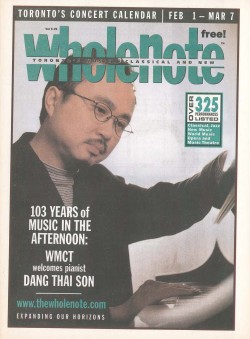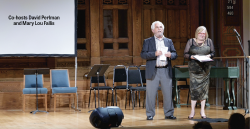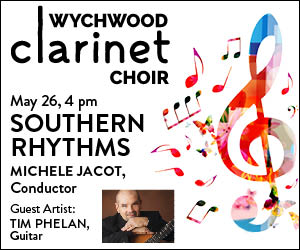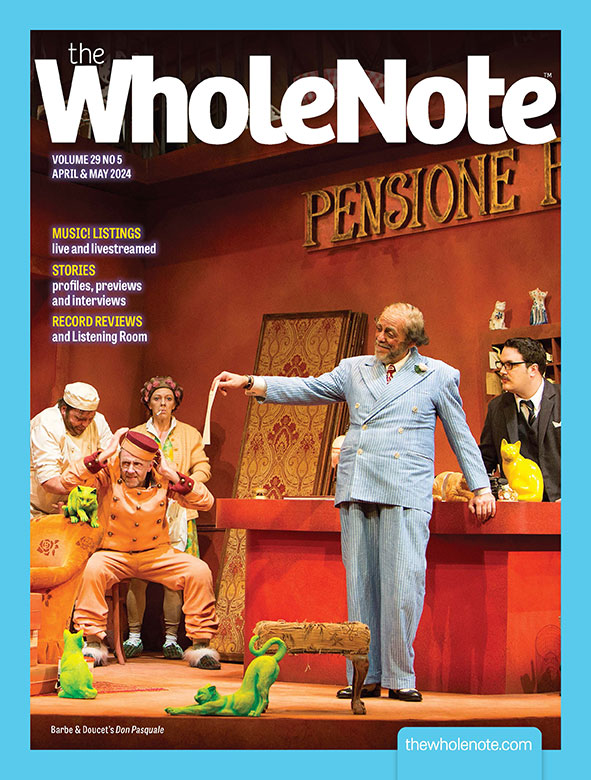Neighbourhoods of the Musical Heart
 Sometimes a detail from one of the stories or columns in the magazine leaps off the page, grabs my heart, and makes my job of penning this Opener much easier. This time it was a a tiny detail – the caption to a joyous photograph at the top of Paul Ennis’ Classical and Beyond column. Dang Thai Son and Yike (Tony) Yang at the end of the 2015 Chopin Competition it reads.
Sometimes a detail from one of the stories or columns in the magazine leaps off the page, grabs my heart, and makes my job of penning this Opener much easier. This time it was a a tiny detail – the caption to a joyous photograph at the top of Paul Ennis’ Classical and Beyond column. Dang Thai Son and Yike (Tony) Yang at the end of the 2015 Chopin Competition it reads.
What grabbed me wasn’t the name of 16-year-old Toronto high school student Yike (Tony) Yang who came seemingly out of nowhere to take fifth place in the world’s most prestigious Chopin competition in Warsaw. It was the joy on the face of the man hugging him – Dang Thai Son, described in the column as “one of Yang’s teachers.”
Dang Thai Son, you see, was on the cover of The WholeNote in February 2000, in the context of what he called “my real Toronto debut” at Women’s Musical Club of Toronto. That February 2000 Toronto recital was 20 years after he had “burst seemingly out of nowhere, onto the world stage in 1980, when he was awarded the First Prize Gold Medal at the tenth Chopin Piano Competition in Warsaw.”
Lots of the details of that story are still clear in my mind, but I hunted out the issue and re-read it. (You can follow his 30-year journey from Saigon to Hanoi, then Moscow, Tokyo and Montreal yourself, by the way. If you go to thewholenote.com/previous you will discover a complete digitized flip-through archive of every magazine in our 20-year history, handily shelved.)
But one crucial detail in the story I had completely forgotten, from the time Dang Thai Son was still a youth in Hanoi: “In 1974 a visiting Russian pianist Isaac Katz heard the 16-year old play, and made it his business to get him to Moscow – to the Moscow State Tchaikovsky Conservatory.”
There is such a huge arc of time captured in that photograph: from Isaac Katz in 1974 making the musicianship he saw in 16-year old Dang Thai Son “his business”; to Dang the teacher’s joy at Yike (Tony) Yang’s 2015 triumph.
It’s nice to think that without the “sheer plod” of documenting, month in and month out, the simple heartbeat of our musical neighbourhoods, such sweet coincidences, with their capacity to make our hearts soar and sing, might well simply be lost in the mists of time.
Do we repeat ourselves? Very well, then, we repeat ourselves. The way we work around here, our individual columnists usually function pretty autonomously within their beats. They seldom have access, in deciding what to cover, to information about what other writers have also decided to cover. Editorially we attempt to avoid complete train-wrecks (i.e. such as when writers’ individual trains of thought go barrelling down exactly the same track from opposite directions).
But more often than not, our reasoning is that if two writers covering different beats find themselves interested in the same story, that’s something of value for our readers to know, because it suggests that the musical item in question has escaped the pigeonhole one might normally consign it to.
Andrew Timar in his World View column this month, for example, talks about something he calls “hybridity” – which I understand to be a rigorous and ethical alternative to cultural appropriation.
David Dacks, artistic director of the Music Gallery explains the distinction succinctly in Timar’s column: “If one is attempting to join culture A to culture B in a coherent musical statement, one must be really attuned to power relationships, comparative structures/forms/tuning/language, your own personal experience and other points of connection or difference between musical ingredients one is working with.”
Is something of the same force at work when beat writers, normally overlapping very little in their interests, find themselves drawn from different directions, like moths, to the same musical candle?
Watch for the tendency as you read. Chances are, something special’s going on! Examples? Watch how David Virelles’ Gnosis shows up in Timar’s column and in Wende Bartley’s In with the New. And how Timar’s reference to Jane Bunnett in the context of discussing Bunnett’s role in Virelles’ musical lif resonates with Ori Dagan’s story “Jane’s Day, Jane’s Way,” which charts some of the reasons that Bunnett is this year’s worthy winner of the Premier’s Award for Excellence in the Arts.
Congratulations, Jane.
Masterpiece means what? As a Facebook RRRR (relatively recent regular reader) it still intrigues me to see which posted topics push people’s buttons enough to get them to comment.
One such recent thread came from a musician/teacher I have a particular interest in, wondering out loud how to explain to her students what a “masterpiece” is.
It elicited a large volume of responses, most of which took the form of naming particular works which, in the opinion of the commenter, were worthy of the designation.
In my way of thinking that is analogous to responding to the question “what is a forest?” by rhyming off the names, or even individual locations of a whole bunch of trees.
My own response was along the lines that a masterpiece is a work where if you don’t get it, the problem is more likely to be with you than with it.
What do you think? I can be disgreed with, or enlightened, at publisher@thewholenote.com




